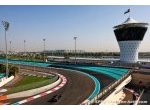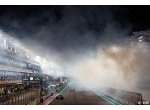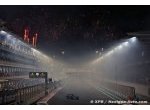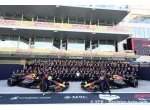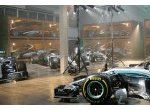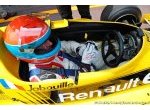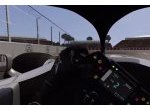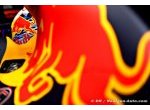Azerbaijan 2018 - GP Preview - Haas F1 Ferrari
Team quotes
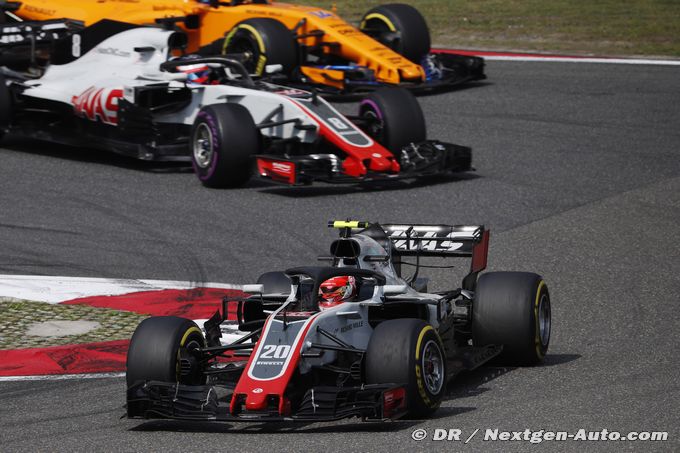
Haas F1 Team debuted in the FIA Formula One World Championship in 2016, becoming the first American Formula One team since 1986. Also debuting in 2016 was Baku City Circuit, home to the Azerbaijan Grand Prix. These two newbies have grown up together, and the two are set to meet again on April 29 for the third annual Azerbaijan Grand Prix.
The youngest team in Formula One heads to one of the newest tracks in Formula One intent on continuing its disruptive presence. Three races into the 21-race schedule, Haas F1 Team is seventh in the constructors’ standings with 12 points while holding a nine-point advantage over eighth-place Sauber with just a single point separating it from sixth-place Toro Rosso.
Haas F1 Team drivers Romain Grosjean and Kevin Magnussen have taken the pace they displayed in winter testing at Circuit de Barcelona – Catalunya and maintained it through Formula One’s stops in Australia, Bahrain and China. Both drivers have appeared regularly in the top-10 in qualifying, and this has translated to running among the top-10 in grands prix with their Haas VF-18s mixing it up with the likes of Scuderia Ferrari, Mercedes and Red Bull as they seemingly lead the midfield charge.
The midfield is comprised of Haas F1 Team, McLaren, Renault, Toro Rosso, Sauber, Force India and Williams. This group has always been competitive as it strives for best-of-the-rest status behind the Big Three of Scuderia Ferrari, Mercedes and Red Bull. But this season has seen the level of competiveness rise to new heights, with the third-year effort from America continuing to raise eyebrows and the height of the midfield.
Baku City Circuit raised the game of Formula One venues when it debuted in 2016. It is a 6.003-kilometer (3.730-mile), 20-turn street course that Grosjean calls “two different circuits in one” and Magnussen claims to be “a mixture of Monza and Monaco.”
Drivers blast down two enormously long straights in a dumbbell-shaped layout that runs counterclockwise. The two main straights include a 2.2-kilometer (1.367-mile) stretch along the promenade and a 1-kilometer (.621-mile) stretch that takes drivers away from Azadliq Square. The Herman Tilke-designed track blends old and new amid these fast straights and slow corners. It winds through a modern, Eastern side where swank hotels and high-end shops reside, to a historic area where the streets are narrow and steep before returning to the mainstraight. A sharp left turn greets drivers at the end of that straight, not too dissimilarly from the Tilke-designed Circuit of the Americas in Austin, Texas, home to the United States Grand Prix. It’s a unique and challenging layout that is augmented by Baku’s notorious winds, which are always prevalent. In fact, City of Winds is the unofficial, but literary, name for Baku.
Baku earned high praise after its inaugural race, with Grosjean calling it “a beautiful city and a beautiful track.” Magnussen echoed those sentiments, saying it was “a pretty cool race with lots of action.”
Action was in abundance in last year’s Azerbaijan Grand Prix. From the onset of the 51-lap race, drivers were bouncing off one another and the walls. And the contact was throughout the field, with dustups between the front-running Mercedes and Scuderia Ferrari drivers, intrasquad battles amongst Force India and Sauber, along with a host of mechanical issues – some self-inflicted – that created a topsy-turvy race before reaching its halfway mark.
Magnussen, in particular, took advantage of the chaos, racing to as high as third before finishing seventh, which ended up being his best result of 2017. Grosjean, meanwhile, rallied from his 16th-place starting spot to finish 13th.
Improvement has been the name of the game for Haas F1 Team in 2018, and the organization plans more of the same in its return to Baku City Circuit. Magnussen looks for his third straight point-paying performance while Grosjean seeks to turn his pace into points for the first time this season.
And just as Haas F1 Team has grown into a points-paying contender at each grand prix, Baku has grown its grand prix into a premier event that contends with Formula One’s most storied venues.
Gunther Steiner
Magnussen has had a strong start to the season and he comes into Baku with back-to-back point-paying finishes. What do you attribute his performance to this year?
“He likes the car and the car is good and that combination has given him confidence. He doesn’t have to overdo things. He believes in himself that he can do a good job with a good car.”
How helpful has it been for Magnussen to have continuity with Haas F1 Team, as it’s the first time in his career where he has been with same team for multiple years?
“I think being with us for two years now has a lot to do with it. The first year, he figured out everybody. He knows who is who. He likes the atmosphere around the team. He hasn’t had this before and, now, coming into the second season is something new, and it’s helped pull the talent out of him.”
Grosjean has had the pace this season, but not the results. In your role as team principal, how do you ensure one side of the garage is operating at the same level as the other side of the garage even if the results are different?
“It’s actually not a problem. While Romain hasn’t had the results he would’ve liked and we all wished we had, for one reason or another, there was never a lack of performance. There are no issues within the team. We have a good team atmosphere and Romain will get the results he and we want. I have no doubt about that.”
So far this season, we’ve seen both Haas F1 Team drivers racing near the front of the field in close proximity to one another. That’s obviously a good thing, but it also presents a new challenge with two drivers under the same roof wanting the same position. How do you manage this dynamic?
“It’s not an easy thing to manage, but it’s a nice thing to manage. Sometimes you need to manage emotions, but I think we have good ground rules in place between the two drivers. They’re pushing each other in a different place and it’s more obvious. It seems like we could always have two cars in the points if everything goes right, and that’s really the only thing that has changed. Before, there were more ups and downs and we weren’t always in contention to finish in the top-10, but having a solid car in the VF-18 allows us to always compete for points.”
The Haas VF-18 has proven quick, thanks in part to its Ferrari engine and also to its overall balance. What are your expectations of the car at Baku City Circuit, which melds two different tracks into one layout?
“We showed in the first three races that we can be competitive at the high end of the midfield, and we’re very confident we can be there in Baku, as well.”
Three races into 2018 and we’ve seen two Scuderia Ferrari wins and one Red Bull win with defending champion Mercedes still looking for a win. It seems there’s parity among the big-three teams, as well as throughout the midfield. What is your take on the competitiveness of this year’s Formula One field?
“It’s very competitive. The Big Three, as we call them, are in their own league, but there is a group of teams behind them who are very strong, us included. It’s a very interesting championship.”
It appears that the fight for the top of the midfield is wide open. Can Haas F1 Team be best of the rest?
“Yes, that is what we’re going to the racetrack for. We haven’t been best of the rest yet due to circumstances, some of which were self-inflicted, like Australia, but I’m sure that moment will come.”
What needs to happen for Haas F1 Team to maintain the speed it has shown early in the season through the rest of the Formula One calendar?
“We need to keep on doing what we’re doing. Every race we learn more about the tires and we build up our knowledge base of the tires from this year, and we have planned for upgrades on the car. Our whole plan this year is different from last year. Last year, we knew we wouldn’t have many upgrades because we decided early in the season that we wouldn’t bring that many updates as we turned our focus to next year’s car. But this year, we made the decision early in the season that we will bring more updates. So, it’s down to how good are our updates, but also how good are the updates of the opposition?”
Baku City Circuit is a track where fuel consumption is high. Is there anything you have to do during the race to ensure your drivers have enough fuel to finish the race?
“Yes, we have to do some lift-and-coast, but everyone is in the same boat. Now, that’s something you sometimes have to do anyway to save a little bit with your tires. But on these high-power circuits, we do have to do some lift-and-coast. All four engine manufacturers are very similar in this regard, so it’s nothing special, but it’s still something we need to look after.”
Fuel levels are set to increase in 2019, from the current allotment of 105 kilograms (27.3 gallons) to 110 kilograms (28.6 gallons) in order for drivers to use the full power of their car’s engine at all times. What can a driver do with those five extra kilograms (1.3 gallons) of fuel? Does it give them the freedom to push as hard as they want, whenever they want?
“On a lot of the circuits, yes, the drivers can push as hard as they want because they have more than enough fuel to go the distance. But on some other circuits there is still some lift-and-coast, and lift-and-coast is sometimes done for other reasons, not only for fuel consumption. Sometimes, it’s to save your brakes or to save your tires. But in theory, most of the tracks with a 110-kilogram limit allow you to be wide open for the whole race. It does add some strategy to the race, as you can either go wide open or save tires, and whatever suits you or your car better, then that’s the choice you make.”
Romain Grosjean
You’ve had the pace this season, but not the results. Does knowing the capability of the car and team allow you to persevere and look ahead to the next race because it provides the next opportunity to get the results you want?
“Yes. I think the car is really good, and the team has done a good job. We haven’t had much luck yet. We’ve had three races where we were looking at points, and three times where we haven’t scored. Knowing that we’ve got a good baseline and a good car is very exciting. I know it’s going to come our way at some point. Hopefully, that’s going to be in Baku.”
The Haas VF-18 has proven quick, thanks in part to its Ferrari engine and also to its overall balance. What are your expectations of the car at Baku City Circuit, which melds two different tracks into one layout?
“Baku is definitely a different circuit from the rest. There’s that massive long straight line – where top speed plays a key role – and then you’ve got the very twisty part around the castle, where the balance needs to be good. It’s going to be a good challenge. It’s not a race where we were very competitive last year. It’ll be interesting to see how much progress we’ve made. It’s a really exciting grand prix – a lot can happen. There are always good opportunities, so we’ll try to get them there.”
Three races into 2018 and we’ve seen two Scuderia Ferrari wins and one Red Bull win with defending champion Mercedes still looking for a win. It seems there’s parity among the big-three teams, as well as throughout the midfield. What is your take on the competitiveness of this year’s Formula One field?
“I think this year it’s been pretty good. There’s a nice battle at the front, then there’s quite a significant gap, then there’s the midfield battle, where one race it’s the Renault that’s the fastest, the next one it’s a Toro Rosso, another race it’s the Haas or maybe the McLaren. That makes it super exciting. We need to get everything super right – down to the last tenths of a second – to be qualifying in front of the others and race from there. It’s pretty exciting. Obviously, the front is a different situation, where Mercedes hasn’t won yet, but they’re still up there fighting really hard.”
It appears that the fight for the top of the midfield is wide open. Can Haas F1 Team be best of the rest?
“I’m hoping so. We’re working on that. If we do achieve that at the end of the season, it would be amazing.”
What needs to happen for Haas F1 Team to maintain the speed it has shown early in the season through the rest of the Formula One calendar?
“It’s development of the car, bringing updates, and making sure we exploit the platform 100 percent as much as we can. That’s really what we need. We’re competing against big teams, and they’re going to bring updates. We need to stay there as well.”
Baku City Circuit is a track where fuel consumption is high. Is there anything you have to do during the race to ensure you have enough fuel to finish the race?
“There are a few things we can do in terms of modes and how you use your engine and how you drive, as well. You can lift and coast before the braking to save some fuel. As soon as there’s a safety car in the race, fuel is not a problem anymore. If there’s no safety car though, fuel can be a bit of a challenge.”
Fuel levels are set to increase in 2019, from the current allotment of 105 kilograms (27.3 gallons) to 110 kilograms (28.6 gallons) in order for drivers to use the full power of their car’s engine at all times. As a driver, what can you do with those five extra kilograms (1.3 gallons) of fuel? Would it give you the freedom to push as hard as you want, whenever you want?
“Yes, I think it’s a good decision. Fuel saving is not something you necessarily want to do as a Formula One driver. You want to be pushing from the first lap to the last lap. There are times when we have to manage the tires, which does manage the fuel, so maybe no fuel limitation and a slightly better tire would be the perfect combination to get a 100 percent exciting race.”
What is the most challenging part of Baku City Circuit?
“It’s a very challenging circuit. I would say the section around the castle, where the road is tiny. It’s quite tricky to drive with a wide car.”
What is your favorite part of Baku City Circuit?
“Actually, the same part. It’s the most challenging one. It’s pretty high speed and you’ve got to get the right balance in those corners as well as the braking. It’s pretty exciting when you get it right.”
Describe a lap around Baku City Circuit.
“You’ve got the first part of the circuit – big straight lines and then big braking into 90-degree corners. It’s not the most exciting, but it’s good for overtaking. Then later the track changes a lot. There are very tight corners, but flowing ones. Around the castle it’s uphill and very fast. The two last corners are downhill with a lot of camber before the long backstraight. It’s really two different circuits in one.
“The difference in the current-generation car is really in the braking points. You’re braking much later and carrying much more speed through the corners, like turns one, three, five and six. You’re going on power earlier. You just get a better grip around the track, and on a city circuit, it does make a lot of difference in how you drive and how you feel it.”
Kevin Magnussen
You’ve had a strong start to the season and you come into Baku with back-to-back point-paying finishes. What do you attribute your performance to this year?
“The main thing is that we have a good car, a better car this year. I also think it makes a big difference that I’m with the same team for a second year, having that continuity. You have a totally different preparation and some experience to rely on.”
The Haas VF-18 has proven quick, thanks in part to its Ferrari engine and also to its overall balance. What are your expectations of the car at Baku City Circuit, which melds two different tracks into one layout?
“Our car balance should be fine in Baku. It’s true that we do have a very good car this year – it’s very well balanced. But it’s going to be very difficult to predict how we’re going to be in Baku, as we don’t know what other people are going to bring in terms of special packages for that circuit. We’re going to try and get the most out of the car, but it’s going to be interesting to see what other people do.”
You ran as high as third in last year’s Azerbaijan Grand Prix, and a podium finish seemed possible. While it didn’t materialize, is a podium finish something that is within Haas F1 Team’s grasp this season?
“Well, I think we were very lucky to find ourselves in third position in last year’s race – it wasn’t at all our natural position. We finished seventh, and even that wasn’t our natural position. We were pretty uncompetitive at last year’s grand prix in Baku, but we capitalized on other people’s mistakes. I’m sure we’re going to be more competitive and, hopefully, we’ll be as lucky as we were last year, as well.”
Three races into 2018 and we’ve seen two Scuderia Ferrari wins and one Red Bull win with defending champion Mercedes still looking for a win. It seems there’s parity among the big-three teams, as well as throughout the midfield. What is your take on the competitiveness of this year’s Formula One field?
“I think it’s great to see Ferrari winning. It shows what kind of package we have in the power unit. It’s definitely, if not the best, then at least on par with the Mercedes. The close, competitive field that we have – especially around the midfield – is exciting. Of course, we want to be on top of it. It’s good for Formula One and the show that the competitiveness is so high amongst most of the field.”
It appears that the fight for the top of the midfield is wide open. Can Haas F1 Team be best of the rest?
“At the moment, I think we are very even with Renault and perhaps a little faster than McLaren, at least in qualifying. The rest of the midfield, perhaps, seems a little more inconsistent, but they can definitely be up there with the rest of us on occasions. Renault is probably the strongest competitor in the midfield, but I think we have a car that can easily match them, and when we do well, beat them also. That should be our aim at the moment – to be fighting those guys. Obviously, we want to improve on last year’s result, which was eighth, and I think that’s a feasible target. We’re doing well at the moment, in terms of performance, but if we find ourselves in a good position halfway through the season, then maybe we have to reset our goals.”
Baku City Circuit is a track where fuel consumption is high. Is there anything you have to do during the race to ensure you have enough fuel to finish the race?
“When you have high fuel consumption, you have to do lift-and-coast, which is sometimes tricky for the tires. It’s not a big problem to do, it’s just in terms of driving and technique, it has a big effect on tire temperature, so you may find yourself with problems. With lift-and-coast, you lose temperature in the brakes, and that goes into the tire, and you lose temperature in the tire as well. It can be a problem if you’re doing a long stint on a set of tires. Losing temperature can be difficult to gain back.”
Fuel levels are set to increase in 2019, from the current allotment of 105 kilograms (27.3 gallons) to 110 kilograms (28.6 gallons) in order for drivers to use the full power of their car’s engine at all times. As a driver, what can you do with those five extra kilograms (1.3 gallons) of fuel? Would it give you the freedom to push as hard as you want, whenever you want?
“It’ll definitely help. Whether it means that we can run flat out for the whole race, that’s not guaranteed, at least at some tracks. Most of the tracks should be fine. You’ll be able to push flat out. I guess at some of the circuits it would mean we carry less fuel than the 110 kilograms, because we won’t need it at all the tracks. But surely at some tracks, I think we might still have to do some lift-and-coast – maybe very little. It’s great to see that we have that rule coming. It’ll allow us to not be restricted in terms of fuel, and being able to push flat out for the whole race. You’re still going to have to manage the tires, though.”
What is the most challenging part of Baku City Circuit?
“The most challenging section is the very tight and twisty part around turn eight. You’re just taking a lot of curb there and the walls are getting close. There are corners everywhere – with walls – and it’s bumpy. It’s a really cool part of the track, and very unique. I don’t think there’s any other place that’s as tight as that section.”
What is your favorite part of Baku City Circuit?
“I would say sector two, in all the narrow bits. It’s good fun and you have to be very precise.”
Describe a lap around Baku City Circuit.
“It’s a mixture of Monza and Monaco, with great opportunities to overtake.”
